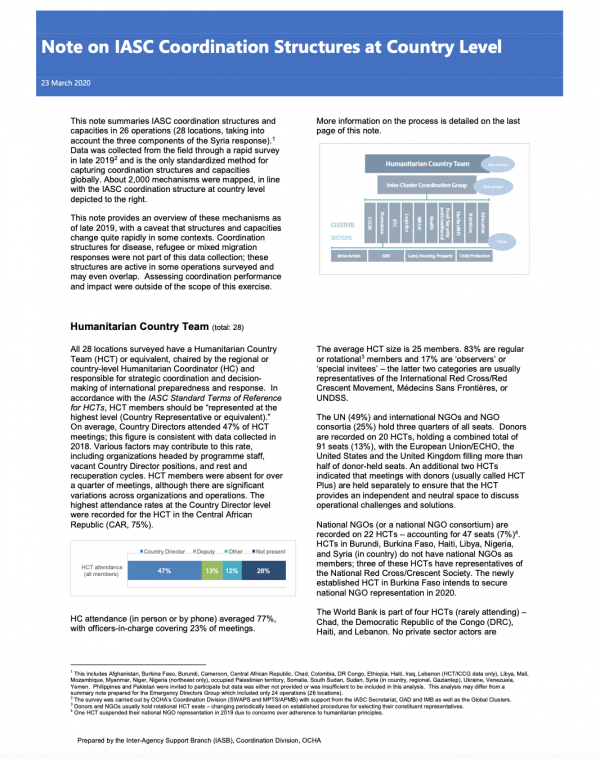
Organisation
Author(s)
Document type
Publication year
- 2020

This note summaries IASC coordination structures and
capacities in 26 operations (28 locations, taking into account the three components of the Syria response). Data was collected from the field through a rapid survey in late 20192 and is the only standardised method for capturing coordination structures and capacities globally. About 2,000 mechanisms were mapped, in line with the IASC coordination structure at country level depicted to the right.
This note provides an overview of these mechanisms as of late 2019, with a caveat that structures and capacities change quite rapidly in some contexts. Coordination structures for disease, refugee or mixed migration responses were not part of this data collection; these structures are active in some operations surveyed and may even overlap. Assessing coordination performance and impact were outside of the scope of this exercise.